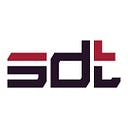In the next decade, we will experience more progress than in the last 100 years combined, as technology reshapes health and materials science, energy, transportation, and a wide range of other industries and sectors. These technology advances are disrupting industry trends in strategy, organization, and operations. Using big data, analytics, and artificial intelligence(AI), industrial IoT (IIoT) is rapidly reshaping the future of markets and industries.
What is industrial IoT? Industrial IoT generally refers to sensors, controllers, and other devices networked together in an industrial environment. This connection allows remote access and monitoring, but more importantly, it enables data collection, exchange, and analysis of on-premise information.
The industrial IoT market size is on the rise, and according to the market research firm Markets and Markets, IIoT has been growing at an average annual rate of 7.4% since 2019. Last year the total size of the IIoT market reached $77.3 billion (about 90.9 trillion won) from $71.5 billion (about 84.8 trillion won) in 2019. As semiconductor and electronic device technology development and cloud computing usage increase, it is expected to reach $110.6 billion (about 130.1 trillion won) by 2025.
Especially in manufacturing, the adoption of industrial IoT is spreading as it is recognized for its visible performance and high return on investment (ROI). According to LNS Research, the manufacturing industry is actively moving to adopt industrial IoT platforms for current manufacturing applications, and 40% of companies that have already adopted industrial IoT platforms are doing better than expected in terms of performance and customer needs.
Some of the benefits from IIoT implementation include visibility into full manufacturing processes, reduced workload for employees, better quality control, and reduced machine down-time. However, implementation also comes with some complications, as it can be an extremely complex task to integrate multiple legacy devices into a new, single platform. Particularly in industrial IoT, turnkey solutions are a growing theme. These turnkey solutions provide a bundled IIoT option for enterprises who lack the knowledge or experience to effectively implement IIoT into their operations. Major companies such as IBM, Hitachi, and telecom companies such as AT&T have also launched some bundled solutions to take advantage of this growing market.
IoT systems are not only critical to the future of the manufacturing industry but also in many other industries. According to IDC, global IoT spending reached $772.5 billion in 2018 and is estimated to grow 15% annually. The industries that made the most investment in IoT in 2018 include manufacturing ($189 billion), transportation ($85 billion), and utilities ($73 billion).
Industrial IoT: How to get started
By leveraging a specially designed industrial IoT platform for businesses, companies can seamlessly drive digital transformation, minimize the resources needed for implementation, and shorten the time frame to realize benefits. However, if you haven’t experienced industrial IoT yet, it might be hard to imagine what industrial IoT can do for you. The following three things should be considered when a company transitions from digital to industrial IoT.
By checking these points, you will be able to derive an effective industrial IoT technology that can meet immediate business needs while achieving major long-term benefits.
For more information on turnkey or bundled industrial IoT, please contact info@sdt.inc.
